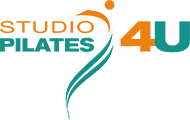Joseph Pilates
Joseph Hubertus Pilates was born in 1880 in Germany, near Duesseldorf. Mildly asthmatic and with a slender body, was initiated from an early age to bodybuilding, which he practiced with such a commitment to be called to sit for the realization of anatomical plates when he was only 14 years old.
The study of anatomy, of muscle development and the practice of many sports became later on subject of study and part of his youth during his stay in Germany.
He moved to England in 1912, began his career as a self-defense instructor for the local police school, while practicing boxing and acrobatic activities in the circus nearby.
At the outbreak of World War I, JH Pilates was interned for a year, with other compatriots, in a prison camp in Lancaster, where he refined his skills by organizing his own and of hiw fellow prisoners training. A very effective training indeed, as none of his pupils contracted the epidemic flu that in 1918 killed thousands of Britons.
Probably thanks to this success, Joseph was later on transferred by the British authorities on the Isle of Man where he found himself having to “rebuild” soldiers maimed by war wounds, bedridden by diseases, and immobilized for a long time.
It goes back to that time the design and construction of the first machines for rehabilitaion. Something that he continued to do once he returned to Germany in the early twenties.
Subsequently, his profession took him to Hamburg to work for the local police as a physical trainer of recruits and of the entire police force. In this period he met Rudolph von Laban, creator of Labanotation (one form of written record of one of the most famous ballet in the world), which influenced his work incorporating part of it in setting up his own teaching. Laban has been the first, of various important personalities from the world of dance (Balanchine at all), that in the following years will take the Pilates method as a reference for their training base.
In 1925 the teaching of the Pilates method became very important to the German government, which invited its creator to personally follow the training plan of the new army. Joseph refused the call, and decided it was time to leave for the United States of America.
During the trip, he met a young nurse named Clara, who later became his wife and his assistant in the first studio opened in New York. Here J.Pilates began to codify his technique: the first part was focused solely on the Mat Work, which is a series of free-body exercises performed on a mat (mat).
This program was codified in a book called Contrology, original name that he coined for this technique.
The work was then extended to the completion of special tools, some of which have survived up to today.
At the time of his captivity in England, Joe had applied springs to the beds of patients in order to help them regain and maintain muscle tone while still bedridden. As a result of this idea he created the Universal Reformer, the tool that, till today, is the central part of the Pilates method.
Until his death in the ’60s, Pilates invented and perfected machines and other exercises for the Mat Work.
Later on, some of his students and associates took over his studio, and then gave rise to the first facilities dedicated to the spread of the method through the formation of new generations of instructors.
